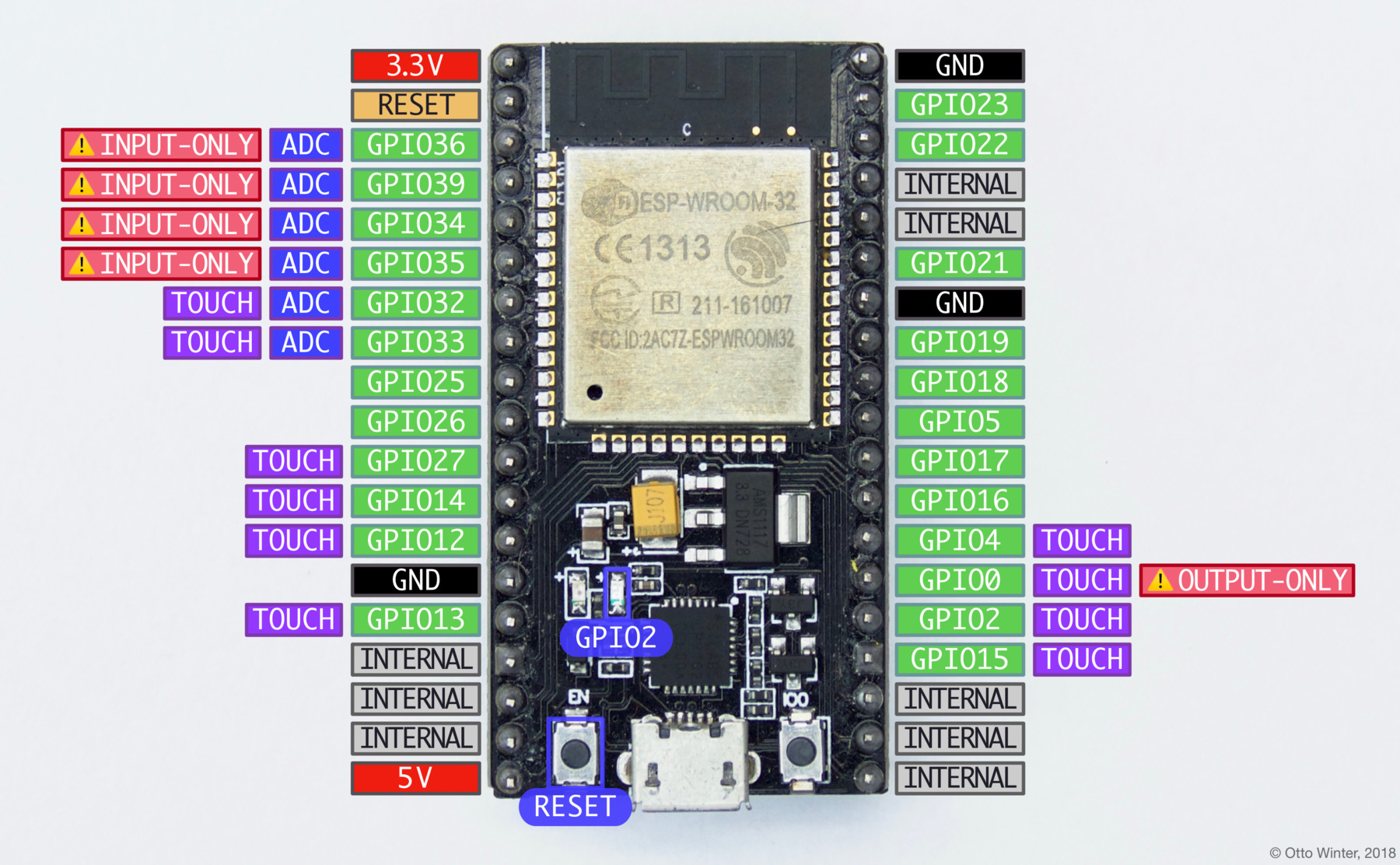
| ESPRESSIF DOCS
| |||
| Pgmming Guide | Espressif Site | ||
ESP32 Internal Registers Etc.
| |||
| Register Table | Address Map | I² Interface | Clock & Calendar |

| Address | Bit 7 MSB | Bit 6 | Bit 5 | Bit 4 | Bit 3 | Bit 2 | Bit 1 | Bit 0 LSB | Function | Range |
|---|---|---|---|---|---|---|---|---|---|---|
| 00h | 0 | 10 Secs | Secs | Seconds | 00-59 | |||||
| 01h | 0 | 10 MIns | Mins | Minutes | 00-59 | |||||
| 02h | 0 | 12,*24 | *AM, PM | 10 Hour | Hour | Hours | 1-12 + *AM,PM 0-23 | |||
| 03h | 0 | 0 | 0 | 0 | 0 | Day O Week | Day | 1-7 | ||
| 04h | 0 | 0 | 10 Date | Date | Date | 01-31 | ||||
| 05h | Century | 0 | 0 | 10 Month | Month | Month/Century | 01-12 Century | |||
| 06h | 10 Year | Year | Year | 00-99 | ||||||
| 07h | A1M1 | 10 Seconds | Seconds | Alarm 1 Secs | 00-59 | |||||
| 08h | A1M2 | 10 Minutes | Minutes | Alarm1 Mins | 0-59 | |||||
| 09h | A1M3 | 12, *24 | *AM,PM | 10 Hour | Hour | Alarm 1 Hours | 1-12 + *AM,PM | |||
| 20 Hour | 0-23 | |||||||||
| 0Ah | A1M4 | Dy,Dt | 10 Date | Day | Alarm 1 Day | 1-7 | ||||
| Date | Alarm 1 Date | 1-31 | ||||||||
| 0Bh | A2M2 | 10 Minues | Minutes | Alarm2 Minutes | 0-59 | |||||
| 0Ch | A2M3 | 12,*24 | *AM,PM | 10 Hour | Hour | Alarm 2 Hours | 1-12 + *AM,PM 00-23 | |||
| 20 Hour | ||||||||||
| 0Dh | A2M4 | 12 *DT | 10 Date | Day | Alarm 2 Day | 1-7 | ||||
| Date | Alarm 2 Date | 1-31 | ||||||||
| 0Eh | *EOSC | BBSQW | CONV | RS2 | RS1 | INTCN | A2IE | A1IE | Control | - |
| 0Fh | OSF | 0 | 0 | 0 | EN32kHz | BSY | A2F | A1F | Control/Status | - |
| 10h | SIGN | DATA | DATA | DATA | DATA | DATA | DATA | DATA | Aging Offset | - |
| 11h | SIGN | DATA | DATA | DATA | DATA | DATA | DATA | DATA | MSB of Temp | - |
| 12h | DATA | DATA | 0 | 0 | 0 | 0 | 0 | 0 | LSB of Temp | - |